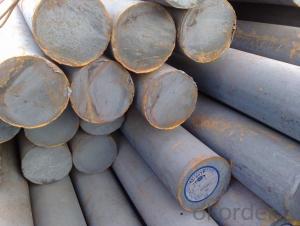Rebar, short for reinforcing bars, is a critical component in modern construction projects. Made from steel, these bars are used to reinforce concrete structures, providing strength and stability. But did you know that the diameter of the rebar plays a significant role in determining the effectiveness of the reinforcement? Let’s dive into the world of rebar diameter and explore its importance in construction.
The Significance of Rebar Diameter
Rebar comes in various diameters, typically ranging from 6mm to 40mm. The choice of diameter depends on several factors, including the size and design of the structure, the load it needs to support, and the type of concrete used. A smaller diameter rebar is suitable for residential construction, while larger diameters are often used in commercial and industrial projects.
How Rebar Diameter Affects Strength
The diameter of the rebar directly impacts its strength. A larger diameter rebar can carry more load and is better suited for structures that require high strength reinforcement. However, this doesn’t mean that using the largest diameter rebar is always the best option. Overusing large diameter rebar can lead to increased costs and may not necessarily improve the overall strength of the structure.
The Role of Rebar in Concrete Structures
Rebar works in tandem with concrete to create a composite material that is both strong and durable. Concrete is excellent at compressive loads but weak in tension. Rebar, being a ductile material, excels in tension. When embedded in concrete, the rebar helps to distribute the tensile forces, preventing the concrete from cracking or breaking under stress.
Factors Influencing Rebar Diameter Selection
Several factors influence the selection of the appropriate rebar diameter for a construction project. These include:
– Structural Design: The design of the structure dictates the amount of reinforcement needed and the optimal diameter of the rebar.
– Load Requirements: The load that the structure needs to support will determine the strength of the rebar required.
– Concrete Type: Different types of concrete have varying strengths and may require different diameters of rebar for optimal reinforcement.
– Cost Considerations: The diameter of the rebar can significantly affect the cost of the project. Larger diameter rebar is more expensive but may not always be necessary.
The Art of Balancing Rebar Diameter and Cost
Balancing the diameter of the rebar with the cost of the project is an art in itself. Engineers and architects must carefully consider the benefits of using a larger diameter rebar against the increased cost. Sometimes, using a combination of different diameters can provide the necessary strength while keeping costs in check.
The Future of Rebar in Construction
As construction techniques evolve, so does the use of rebar. Innovations in material science and construction methods are leading to the development of new types of rebar with improved properties. These advancements promise to make structures stronger, more durable, and more cost-effective.
Personal Touch: A Passion for Reinforcement
From a personal perspective, I’ve always been fascinated by the role of rebar in construction. It’s the unsung hero of our built environment, silently doing its job to ensure the safety and stability of our structures. The intricacies of rebar diameter selection and its impact on the overall project are a testament to the precision and care that goes into the engineering of our buildings.
Conclusion
Understanding the role of rebar diameter in construction is crucial for anyone involved in the industry. Whether you’re an architect, engineer, or contractor, knowing how to select the right diameter for your project can make a significant difference in the strength, durability, and cost-effectiveness of the structure. So, the next time you walk past a construction site, take a moment to appreciate the humble rebar and the vital role it plays in our everyday lives.

